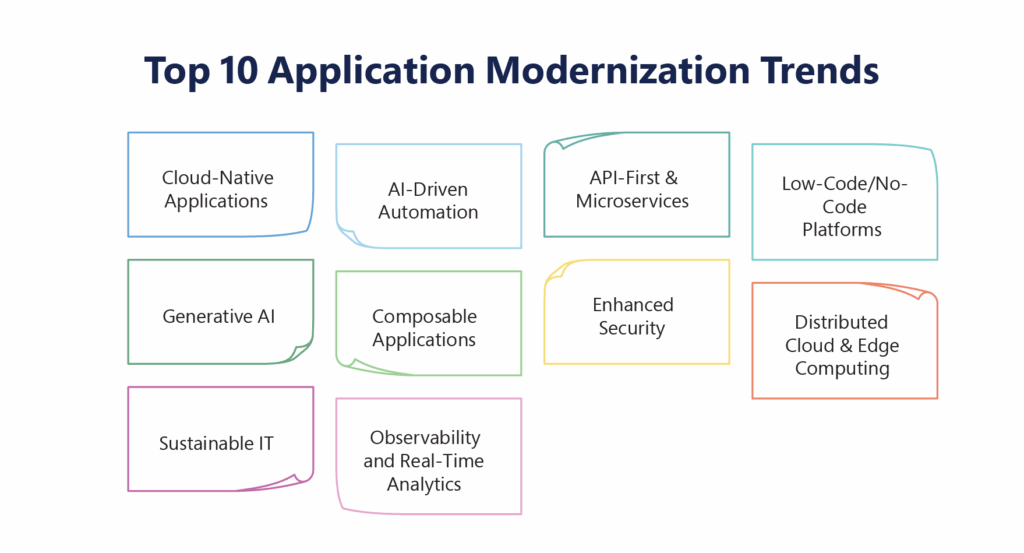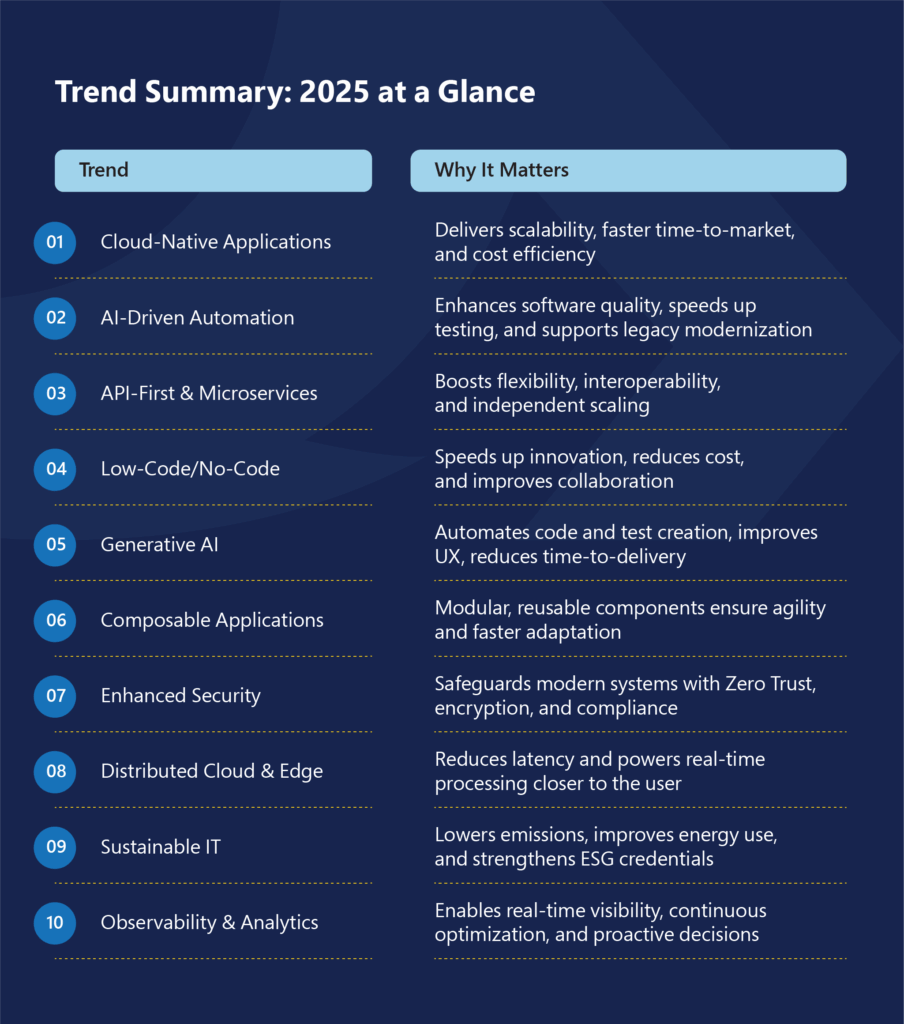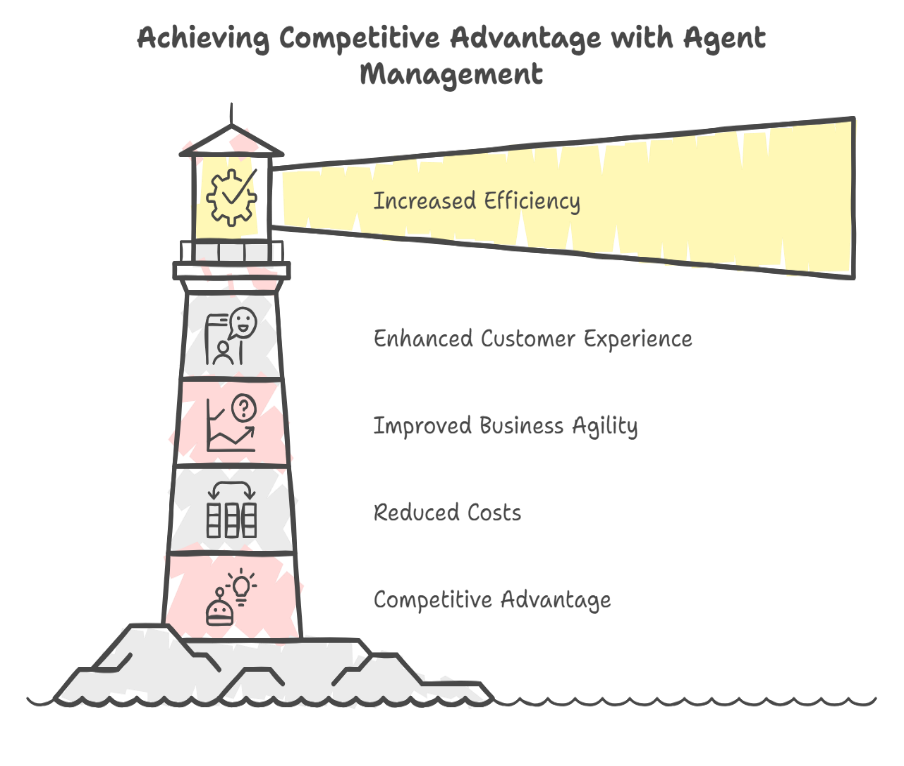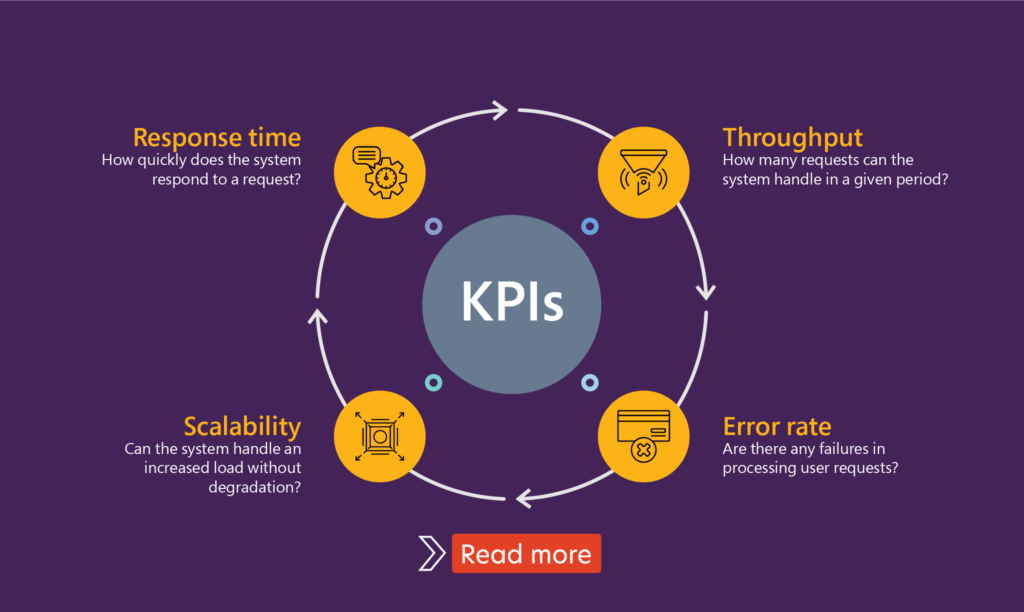Accelerate IT operations with AI-driven Automation
Automation in IT operations enable agility, resilience, and operational excellence, paving the way for organizations to adapt swiftly to changing environments, deliver superior services, and achieve sustainable success in today's dynamic digital landscape.
Driving Innovation with Next-gen Application Management
Next-generation application management fueled by AIOps is revolutionizing how organizations monitor performance, modernize applications, and manage the entire application lifecycle.
AI-powered Analytics: Transforming Data into Actionable Insights
AIOps and analytics foster a culture of continuous improvement by providing organizations with actionable intelligence to optimize workflows, enhance service quality, and align IT operations with business goals.
Your legacy systems fail during a critical moment—orders stall, customer trust erodes, and your business takes a hit. This is the harsh reality many IT leaders face as the pressure to modernize becomes unavoidable. In 2025, keeping legacy systems running isn’t just a risk—it’s a barrier to survival.
According to American City Business Journals, 99% of IT leaders agree that emerging technologies are vital for modernization, and they plan to implement at least one initiative in the next 1-2 years. If your organization hasn’t already started, now is the time to act.
Let’s dive into the top application modernization trends in 2025 and why embracing them is key to staying competitive.
A recent survey found that 48% of M&A professionals are now using AI in their due diligence processes, a substantial increase from just 20% in 2018, highlighting the growing recognition of AI’s potential to transform M&A practices.
Key Application Modernization Trends for IT Leaders to Embrace in 2025

1. Cloud-Native Applications: The New Norm
Cloud-native architectures are redefining application development, offering unparalleled scalability, resilience, and flexibility. By leveraging microservices, containers, and orchestration tools like Kubernetes, organizations can deploy applications that are more adaptable to changing business needs.
Why it Matters
- Scalability: Easily scale services independently
- Resilience: Enhanced fault tolerance and minimized downtime
- Agility: Accelerated deployment cycles and faster time-to-market
- Cost Efficiency: Optimized resource usage and reduced infrastructure expenses
2. AI-Driven Automation: The Intelligence Edge
Artificial intelligence and automation streamline modernization by enabling predictive analytics, automated testing, and personalized user experiences.

Why it Matters
-
-
- Predictive Maintenance: Anticipate and mitigate system failures
- Automated Testing: Reduce QA cycles significantly
- Personalized Experiences: Deliver tailored user interactions
- Process Automation: Enhance operational consistency and efficiency
-
Intelligent Application Management (iAM) platforms like Qinfinite use AI to automate legacy code analysis, visualize system dependencies, and streamline data migration—leading to faster, lower-risk modernization and future-ready IT infrastructure.
3. API-First & Microservices: Maximum Flexibility
Large, monolithic applications are giving way to modular, API-centric architectures. An API-first approach ensures that new features or services are built as independent modules with well-defined interfaces, making them easier to integrate and reuse.
Why it Matters
-
-
- Interoperability: Smooth integration with third-party services
- Independent Deployment: Scale or update features without disrupting the whole app
- Improved Security: Isolate issues and limit their impact
- Faster Development: Parallel development accelerating delivery
-
4. Low-Code/No-Code Platforms: Speeding Up Innovation
Low-code/no-code platforms empower non-developers and IT teams alike to build applications using visual interfaces with minimal coding. This democratizes development, speeds up delivery, reduces reliance on technical specialists, and strengthens collaboration between business and IT.
Why it Matters
-
-
- Rapid Prototyping: Quick iterations and deployment
- Cost Reduction: Lower reliance on specialized developers
- Enhanced Collaboration: Encourages active involvement from business users, leading to solutions that align better with real-world needs
- Flexibility: Makes it easy to tweak or scale applications in response to shifting market or business demands
-

5. Generative AI: Transforming Software Development
Generative AI automates code generation, testing, and documentation, drastically reducing development timelines.
Why it Matters
-
-
- Code Generation: Speeds up development by automating repetitive coding tasks and generating functional code from simple prompts
- Documentation: Creating and maintaining up-to-date technical documentation
- Testing: Enhances software quality with AI-generated test cases, enabling broader coverage and faster debugging
- User Experience: Enhancing interfaces through AI-driven design suggestions
-
6. Composable Applications: Built for Change
Composable architectures enable organizations to build applications using modular, reusable components. This approach allows for greater agility, faster innovation, and easier maintenance—making it easier to respond to changing business needs.
Why it Matters
-
-
- Modularity: Independent development and deployment
- Reusability: Efficient use of components across multiple applications
- Scalability: Easily scale individual modules based on demand without impacting the whole system
-
7. Enhanced Security: Non-negotiable
With growing interconnectivity, robust security measures like Zero Trust architectures, identity management, and encryption have become paramount.
Why it Matters
-
-
- Zero Trust Architecture: Continuous verification of users and devices
- Data Encryption: Protection of sensitive information
- Compliance: Adherence to industry standards and regulations
-

8. Distributed Cloud & Edge Computing: Powering Performance
Distributed cloud and edge computing significantly improve application performance by reducing latency. By processing data closer to the source, these technologies enable faster response times and more efficient handling of data-intensive tasks.
Why it Matters
- Reduced Latency: Faster data processing closer to users. Edge computing can reduce latency to under 5 milliseconds, compared to the 20–40 milliseconds typical of traditional cloud computing.
- Enhanced User Experience: Improved application responsiveness
- Real-Time Data Processing: More efficient handling of data-intensive tasks

9. Sustainable IT: Environmentally Responsible Modernization
Sustainable IT refers to practices and technologies that minimize environmental impact throughout the IT lifecycle—from infrastructure and application development to cloud usage and device management. It’s about modernizing systems in a way that’s not just efficient, but also eco-conscious.
Why it matters
-
-
- Reduced Carbon Footprint: Energy-efficient hardware, cloud optimization, and smarter code reduce emissions across the stack
- Energy Efficiency: Modern infrastructure and virtualization reduce power consumption at data centres and endpoints
- Compliance: Helps meet regulatory requirements and ESG goals set by governments, investors, and global alliances
- Brand Value: Enhances reputation with eco-aware customers and employees
-
10. Observability and Real-Time Analytics: Continuous Improvement
Advanced observability tools and real-time analytics empower IT teams to proactively manage performance and swiftly address issues. By providing comprehensive insights into system behaviours, these tools enable organizations to enhance reliability, optimize user experiences, and drive operational efficiency.
Why it matters
-
-
- Proactive Monitoring: Early identification of issues prevents potential system failures
- Enhanced Reliability: Reduced system downtime
- Improved User Satisfaction: Seamless user experiences
- Operational Efficiency: Real-time insights driving faster decisions
-
Trend Summary: 2025 at a Glance

Conclusion: Preparing for the Future
The application modernization trends Top Application Modernization Trends for 2025 clearly indicate a future where agility, efficiency, and adaptability reign supreme. IT leaders must proactively embrace these innovations to stay competitive, secure, and responsive in a dynamic market. The key to success lies in not just adopting these trends but leveraging intelligent platforms that streamline the entire process.
Quinnox’s intelligent Application Management (iAM) platform, Qinfinite, helps you navigate these modernization challenges by automating legacy code analysis, optimizing system dependencies, and ensuring faster, lower-risk migrations.
Don’t let outdated systems hinder your growth—empower your IT strategy with Qinfinite and lead the charge in application modernization.
Don’t just take our words out of it – Schedule a FREE 120-mins consultation with our experts today!
1. Streamline Development and Deployment:
- Facilitate the initial design and configuration of agents, including goal definition, algorithm selection, and data source configuration.
- Enable seamless deployment across diverse environments, such as cloud platforms, on- premise servers, and edge devices.
4. Telecommunications
Dynamic Risk Assessment: In telecom, data privacy regulations (like GDPR) are crucial. AI assesses the impact of privacy regulations on customer data handling practices, ensuring compliance without compromising service.
Example: AI helps telecom providers audit data storage practices to align with GDPR, ensuring customer privacy and regulatory adherence.
5. Retail
Automated Policy and Document Updates: Retailers must adapt to consumer protection and employee rights regulations. AI updates internal policies based on regulatory changes, keeping customer interactions and employee practices compliant.
Example: AI generates new training material for customer service teams when consumer rights regulations are updated, ensuring compliance with minimal manual effort.
With iAM, every application becomes a node within a larger, interconnected system. The “intelligent” part isn’t merely about using AI to automate processes but about leveraging data insights to understand, predict, and improve the entire ecosystem’s functionality.
Consider the practical applications:
Real-World Example: Enhancing Customer Service in Finance
Consider a large financial institution seeking to improve its customer service experience. By leveraging Agent Management Services, the institution can:
- Deploy a network of Al-powered agents capable of handling a wide range of customer inquiries, such as account balance inquiries, transaction history checks, and basic support requests.
- Train and optimize these agents to accurately understand customer intent, provide timely and helpful responses, and even anticipate customer needs proactively.
- Ensure the security and compliance of these agents, safeguarding sensitive customer data and adhering to strict financial regulations.
- Continuously monitor and refine agent performance, identifying areas for improvement and making necessary adjustments to optimize the customer experience.

- Increased Efficiency and Productivity: Automating routine tasks and streamlining workflows, freeing up human resources for more strategic initiatives.
- Enhanced Customer Experience: Delivering personalized and efficient customer service, improving customer satisfaction and loyalty.
- Improved Business Agility: Enabling faster response times to changing market conditions and customer demands.
- Reduced Costs: Optimizing resource allocation and minimizing operational expenses.
- Competitive Advantage: Gaining a competitive edge by leveraging the power of Al and automation to innovate and deliver superior products and services.
Conclusion:
The rise of agent-driven systems marks a significant shift in the technology landscape. By embracing Agent Management Services, organizations can navigate this new era with confidence, unlock the full potential of AI, and gain a competitive advantage in the digital age.

Qinfinite’s Auto Discovery continuously scans and maps your entire enterprise IT landscape, building a real-time topology of systems, applications, and their dependencies across business and IT domains. This rich understanding of the environment is captured in a Knowledge Graph, which serves as the foundation for making sense of observability data by providing vital context about upstream and downstream impacts.
2. Deep Data Analysis for Actionable Insights:
Qinfinite’s Deep Data Analysis goes beyond simply aggregating observability data. Using sophisticated AI/ML algorithms, it analyzes metrics, logs, traces, and events to detect patterns, anomalies, and correlations. By correlating this telemetry data with the Knowledge Graph, Qinfinite provides actionable insights into how incidents affect not only individual systems but also business outcomes. For example, it can pinpoint how an issue in one microservice may ripple through to other systems or impact critical business services.
3. Intelligent Incident Management: Turning Insights into Actions:
Qinfinite’s Intelligent Incident Management takes observability a step further by converting these actionable insights into automated actions. Once Deep Data Analysis surfaces insights and potential root causes, the platform offers AI-driven recommendations for remediation. But it doesn’t stop there, Qinfinite can automate the entire remediation process. From restarting services to adjusting resource allocations or reconfiguring infrastructure, the platform acts on insights autonomously, reducing the need for manual intervention and significantly speeding up recovery times.
By automating routine incident responses, Qinfinite not only shortens Mean Time to Resolution (MTTR) but also frees up IT teams to focus on strategic tasks, moving from reactive firefighting to proactive system optimization.
Did you know? According to a report by Forrester, companies using cloud-based testing environments have reduced their testing costs by up to 45% while improving test coverage by 30%.
FAQ’s Related to Top Application Modernization Trends
Application modernization is the process of updating and transforming legacy applications to align with current technology standards. It involves refactoring, replatforming, or replacing outdated systems with cloud-native or microservices-based architectures to improve performance, scalability, and security.
Application modernization is crucial because it helps organizations stay competitive by improving operational efficiency, reducing costs, enhancing security, and enabling faster innovation. It ensures systems remain relevant in an ever-evolving digital landscape, supporting better customer experiences and business agility.
Organizations face several challenges during application modernization, including legacy system complexity, data migration issues, skill gaps, cost and resource allocation and integration with existing systems.
Top trends include cloud-native architectures for scalability, AI-driven automation, microservices and API-first development for flexibility, low-code/no-code platforms, and edge computing for improved performance.
